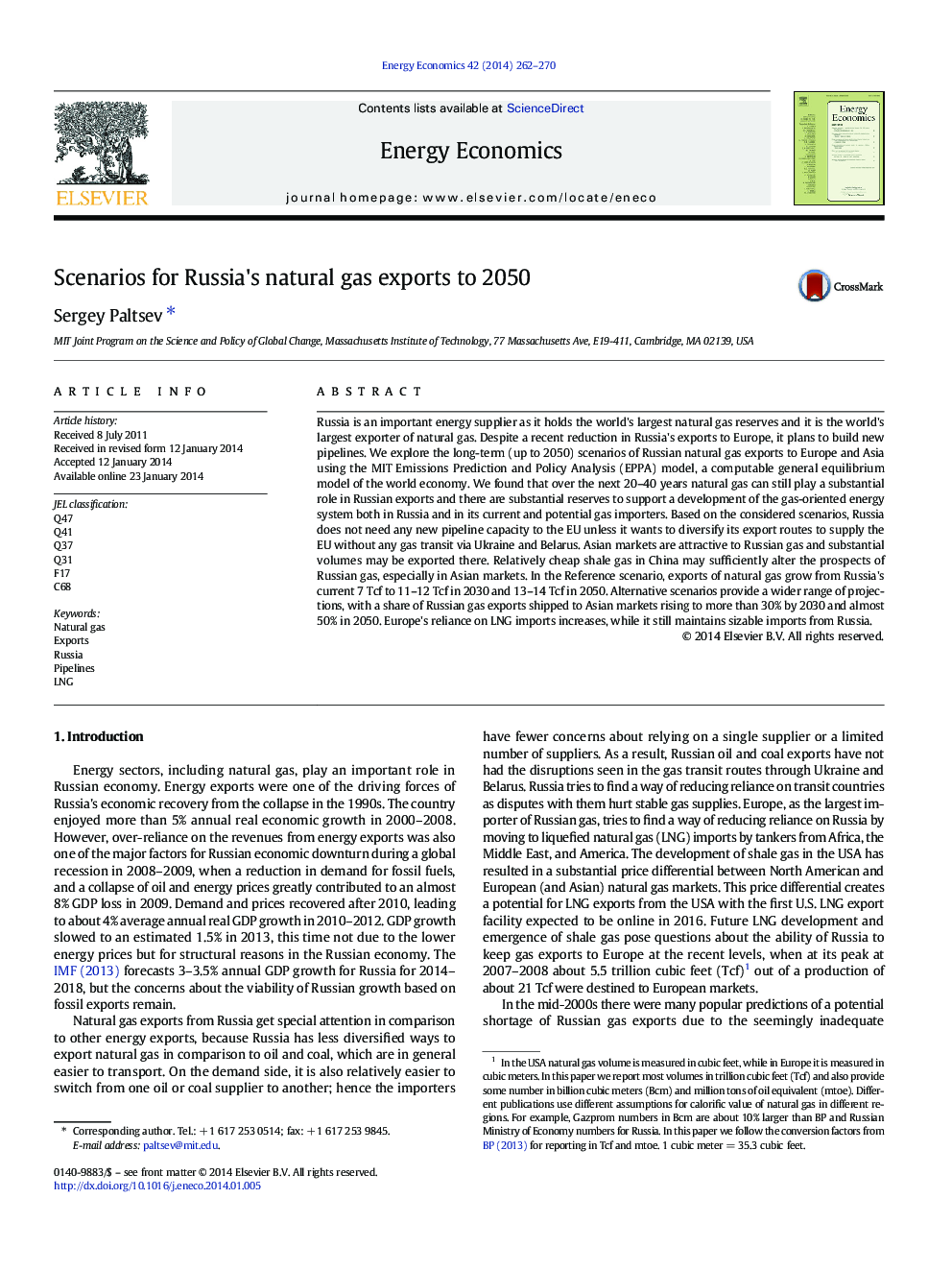| کد مقاله | کد نشریه | سال انتشار | مقاله انگلیسی | نسخه تمام متن |
|---|---|---|---|---|
| 5064719 | 1476721 | 2014 | 9 صفحه PDF | دانلود رایگان |
- In the Reference scenario exports of natural gas grow from Russia's current 7 Tcf to 11-12 Tcf in 2030 and 13-14 Tcf in 2050.
- In alternative scenarios a share of Russian exports to Asian markets is rising to about 30% by 2030 and 50 % in 2050.
- Cheap shale gas in China can sufficiently alter Russian natural gas export.
- Reduction in nuclear generation in Europe can lead to increased exports of natural gas from Russia.
- Europe's reliance on LNG imports increases, while it still maintains sizable imports from Russia.
Russia is an important energy supplier as it holds the world's largest natural gas reserves and it is the world's largest exporter of natural gas. Despite a recent reduction in Russia's exports to Europe, it plans to build new pipelines. We explore the long-term (up to 2050) scenarios of Russian natural gas exports to Europe and Asia using the MIT Emissions Prediction and Policy Analysis (EPPA) model, a computable general equilibrium model of the world economy. We found that over the next 20-40Â years natural gas can still play a substantial role in Russian exports and there are substantial reserves to support a development of the gas-oriented energy system both in Russia and in its current and potential gas importers. Based on the considered scenarios, Russia does not need any new pipeline capacity to the EU unless it wants to diversify its export routes to supply the EU without any gas transit via Ukraine and Belarus. Asian markets are attractive to Russian gas and substantial volumes may be exported there. Relatively cheap shale gas in China may sufficiently alter the prospects of Russian gas, especially in Asian markets. In the Reference scenario, exports of natural gas grow from Russia's current 7Â Tcf to 11-12Â Tcf in 2030 and 13-14Â Tcf in 2050. Alternative scenarios provide a wider range of projections, with a share of Russian gas exports shipped to Asian markets rising to more than 30% by 2030 and almost 50% in 2050. Europe's reliance on LNG imports increases, while it still maintains sizable imports from Russia.
Journal: Energy Economics - Volume 42, March 2014, Pages 262-270
